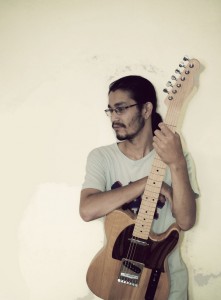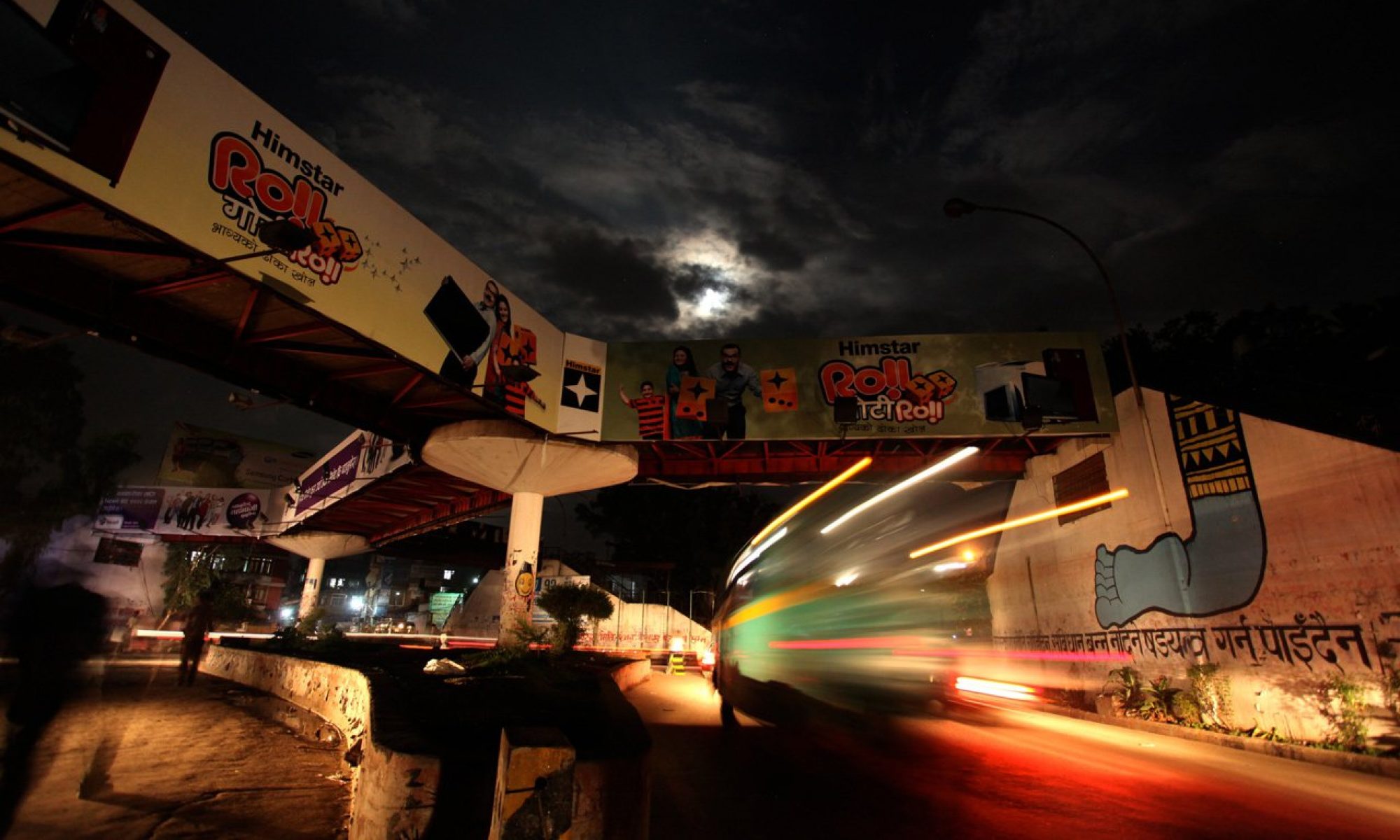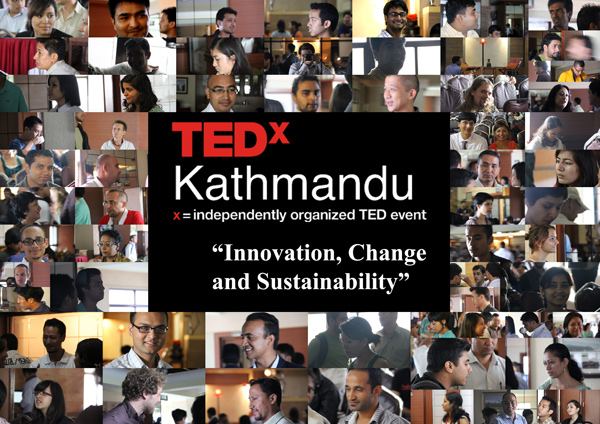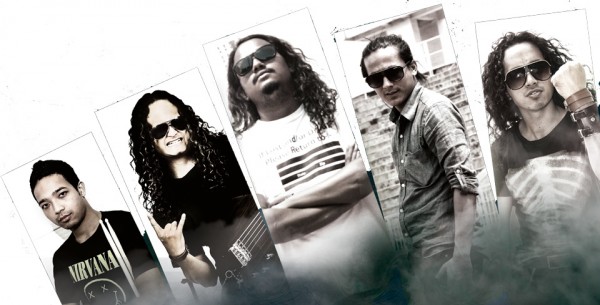Sunny Tuladhar is better known in the Kathmandu music scene fhis explosive performances as the electric guitarist in the popular underground rock band Jindabaad!!! Perhaps lesser known but equally impressive is the fact that in and around playing, recording, practicing and teaching music, Sunny manages to make guitars- from scratch! As the first real professional guitar maker in Nepal, Verse sits down with this humble musical genius to learn more about his craft, the intricacies of guitar making and how the internet enabled him to turn a dream into reality.
 As a guitarist for more than a decade now, Sunny first became interested in repairing because he wanted to be able to fix his own guitars. ‘You couldn’t rely on anyone else,’ he explained, ‘because there simply was no one here to do it.’ After fiddling around with his own guitars, Sunny would then fix friends for free. It was here, some six years ago, that the idea was born to professionally repair and ultimately make guitars right here in Nepal. But how does one go about doing that when there is no school to attend or teacher to learn from? Sunny, like many others faced with limited tangible resources, turned to the internet to research, learn and teach himself how to make guitars. Youtube and the Internet are the new DIY.
As a guitarist for more than a decade now, Sunny first became interested in repairing because he wanted to be able to fix his own guitars. ‘You couldn’t rely on anyone else,’ he explained, ‘because there simply was no one here to do it.’ After fiddling around with his own guitars, Sunny would then fix friends for free. It was here, some six years ago, that the idea was born to professionally repair and ultimately make guitars right here in Nepal. But how does one go about doing that when there is no school to attend or teacher to learn from? Sunny, like many others faced with limited tangible resources, turned to the internet to research, learn and teach himself how to make guitars. Youtube and the Internet are the new DIY.
For six months Sunny spent ‘every free moment’ downloading tutorials and ‘reading the same stuff more than ten times’ in order to really comprehend the material. Surfing Blue Theory websites and meticulously watching the process on Youtube, Sunny slowly pieced together parts of the intricate guitar puzzle. After a period of intense orientation study, Sunny spent the next two years concentrating on the technicalities of design and ‘the extent to which things could go bad.’ The proceeding six months were dedicated to preparation, until, exactly three years ago this month, Sunny made his first guitar. Unable to source proper wood at that time, he lamented that ‘the first one played well ‘it had the right measurements ‘but it didn’t finish well.’ After using it for a couple of jam sessions, the wood gave way because of its poor quality and the guitar broke. But with the belief that ‘I could do it and I wanted to do it,’ Sunny headed for the books.
‘I would spend hours at the Botanical Gardens Library in Godavari looking through different books and I found that there were lots of woods supposed to be in Nepal but when I went to source them I couldn’t find them,’ Sunny reflects. The main raw materials he now uses include American Mapal, and the more basic supplies of rose, mahogany, elder, ash, berch and tone woods. It is ‘basically carpentry,’ Sunny says, ‘but you need to be really precise because when making guitars every millimetre counts.’ This is particularly important to ensure the string alignment is perfectly centred. It is these tiny details that distinguish a good guitar from an amazing one. The hardware for the guitar is supplied by the clients.
After just three years, Sunny has completed nearly a dozen guitars, the most recent of which just toured Australia with Sarun Tamraka, a member of The Uglyz. Yet despite making so much progress where he ‘gets better and better with each guitar’, Sunny insists there is a long way to go. ‘I will always be studying and experimenting. Real craftsmanship and professionalism comes from experience.’ In the future, Sunny hopes to expand and run a workshop that meets the demand. This includes having somewhere more secure to store the woods and even hiring an assistant to help in the construction phase.
‘The support from family and friends is beyond what I ever expected,’ Sunny reveals, as the interview draws to a close. ‘Especially in the past few months when I upload pictures to Facebook, the response is 98% positive. People are really interested in what I am doing.’ This interest, which is predominantly sustained through social media, is also instrumental in providing a free and ever expanding platform for Sunny, and artists like him, to showcase their work. ‘I already have 7-8 orders and most of them have come through people seeing my work on Facebook.’
Sunny’s experience of learning from and now operating predominantly by social media sites, is emblematic of a paradigm shift in learning and business. Ushering in an era of the DIY entrepreneur, social media affords people the unique opportunity to access a wealth of information and knowledge they otherwise would not have access to. Sunny epitomises those highly dedicated and self-motivated few who have grabbed this opportunity with both hands. ‘I didn’t know what would happen,’ he finalises. ‘But I tried and succeeded.’
[blockquote]
Sunny’s guitars: Where are they now?
‘• The body of his first ever guitar remains in Sunny’s room as a reminder of how hard work can finally pay off.
‘• The first Custom Stratocaster is with his teacher from music school, Iman Shah.
‘• Ryan Jordan of the Cruentus, had his Custom RG signed by Joe Satriani. ‘He is my ultimate idol,’ Sunny beams, ‘I was so excited to hear that my guitar was signed by Joe Satriani’.
‘• His sixth guitar, a Custom Flying V, is with friend, Sashank Shrestha.
‘• A Custom Modified JS remains a work in progress, but Sunny intends to keep it for himself.
‘• Originally made for Gokul Atreya, Sunny’s ESP Replica is now in the United States.
‘• Taking the order through Facebook, the Custom Telecaster for Sudip Ale is being put to good use in the UK.
‘• Prabil Bradhanang had the next Custom Stratocaster.
‘• Sarun Tamrakar’s Custom Telecaster just recently toured Australia on the Uglyz tour.
‘• A Custom PRS 7 String Replica is currently in the making for Sunny’s fellow Jindabaad band member and friend, Abhisek Bhadra
[/blockquote]
[minigallery link=”file”]








